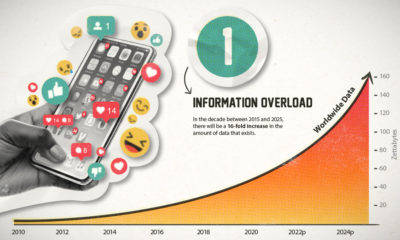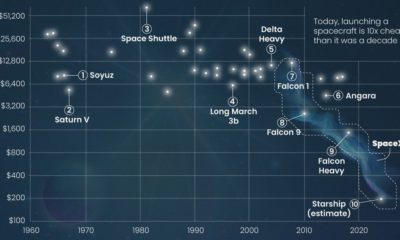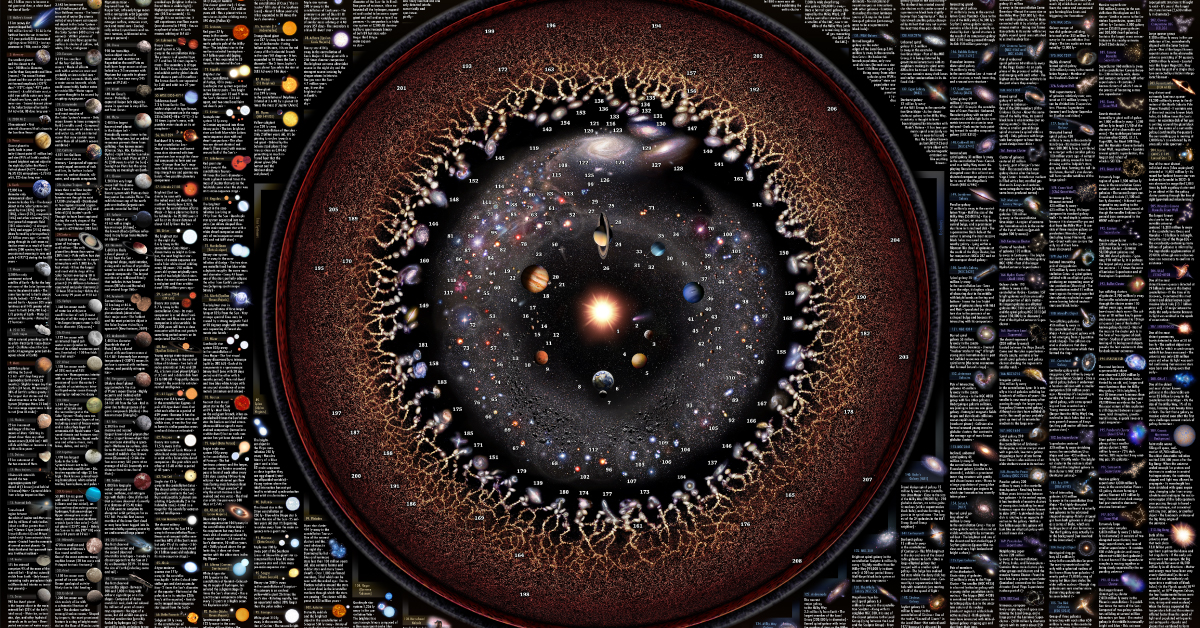So how do you measure the weight of objects in space? You don’t. When it comes to the cosmos, all that matters is mass. Today’s interactive data visualization comes from Reddit user Ranger-UK, and is designed by Daniel Caroli. It delves into the different masses which make up our solar system, and how they all compare in size.
A Star Is Born
Perhaps not surprisingly, the Sun eclipses all other nearby objects by mass. At the heart of our solar system, this yellow dwarf’s gravity is what holds it all together. The Sun actually makes up 99.8% of our entire solar system’s mass — and we’re lucky to be living in the other 0.2%. Responsible for all life on Earth, it’s no wonder that various cultures have worshiped the Sun throughout history, and even dedicated deities to it. Currently in its middle years — the sun is over four billion years old, and it’s predicted to remain stable for another five billion years. After this, it will overtake the orbits of Mercury and Venus and then shrink back to the size of a white dwarf.
Out Of This World
The gas giants are all more than ten times as massive as Earth, even though they’re mainly made up of hydrogen and helium. They dominate the Solar System’s real estate — once the Sun is taken out of the equation, of course. In order, here’s how the planets stack up:
Satellites Out of Control
The further away from the Sun you go, the more moons can be found orbiting planets. Earth’s singular moon is the fifth largest of almost 200 natural satellites found in the solar system. Mars has two moons that don’t make it into the visualization above due to their low masses:
Phobos: 1.08×10^16 kg Deimos: 2.0×10^15 kg
Here’s a breakdown of some other moons out there:
Jupiter Total named: 53 Biggest moons: Ganymede, Callisto, Io, Europa These four can be seen easily with some help from binoculars. Saturn Total named: 53 Biggest moons: Titan, Rhea, Iapetus, Dione, and Tethys Uranus Total named: 27 Biggest moons: Titania, Oberon, Ariel, Umbriel Neptune Total named: 14 Biggest moon: Triton, which is as big as the dwarf planet Pluto.
Pluto and some “leftovers” of the solar system lie in the distant region of the doughnut-shaped Kuiper belt, between 30 to 50 astronomical units (AU) away. Beginning at the orbit of Neptune, the belt encompasses some of those objects in the visualization categorized as “other”. So far, we’ve only managed to set foot on our own moon. NASA’s Opportunity rover helped us explore the Red Planet virtually for over 14 years, while the Curiosity is still going strong. Who knows what else lurks beyond the edges of our solar system? — Neil Armstrong, looking back at the Earth from the Moon (July 1969) on And while we haven’t figured out all the answers quite yet, we’ve made some remarkable discoveries when it comes to learning about outer space. What are some of the most notable observations that scientists have discovered so far? This map of outer space by Pablo Carlos Budassi highlights more than 200 celestial objects in our universe and provides details and facts about each one.
The Types of Celestial Objects Mapped
To create this graphic, Budassi used a combination of logarithmic astronomical maps from Princeton University, as well as images from NASA. The visualization highlights 216 different celestial objects that are color-coded and organized into five overarching categories:
Moons and Asteroids Planets Galaxies Star System Great Scales/Superclusters
At the center of the map is the Sun, which is the largest object in our Solar System. According to NASA, the Sun’s volume is equivalent to 1.3 million Earths. The Sun is the powerhouse of life here on Earth—its energy provides our planet with a mild, warm climate that keeps us alive, keeping the Earth from becoming a frozen rock. While the Sun is the only star in the Solar System, there is a neighboring star system called Alpha Centauri that’s approximately 4.37 light-years away. It’s made up of three stars—Proxima Centauri, Alpha Centauri A, and Alpha Centauri B. Proxima Centauri, as the Latin name indicates, is the closest of the three to Earth and has an Earth-sized planet in its habitable zone.
The Life of a Star
In a star’s early stages, it’s powered by hydrogen. However, when its hydrogen stores are depleted, some stars are able to fuse helium or even heavier elements. Stars similar to the size of the Sun will grow, cool down, and eventually transform into a red giant. The Sun has about 5,000 million more years before it reaches its red giant stage, but when that happens, it will likely expand to the point where it swallows up the Earth. While stars emit energy for years, it’s important to note that they don’t shine for eternity. Their exact life span depends on their size, with bigger stars burning out faster than their smaller counterparts. But as light from distant objects millions of light-years away takes a long time to reach us here on Earth, the largest of stars shine for hundreds of millions of years after they die.
Just How Big is Our Universe?
Some experts believe that the universe is infinite, while others argue that we can’t yet know for certain because current measurements aren’t accurate enough. However, scientists believe that our observable universe extends about 46 billion light-years in every direction, giving it a diameter of roughly 93 billion light-years. But just how much of the universe extends beyond what we can see? We may never find out.













